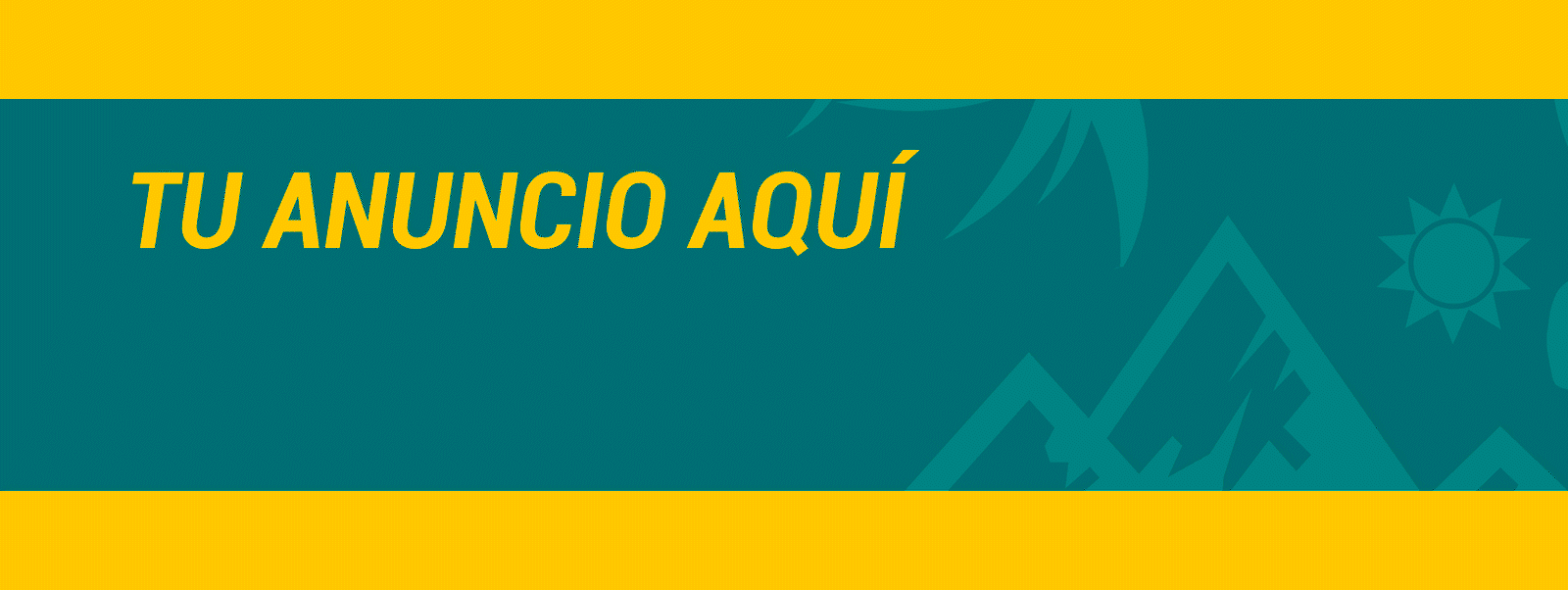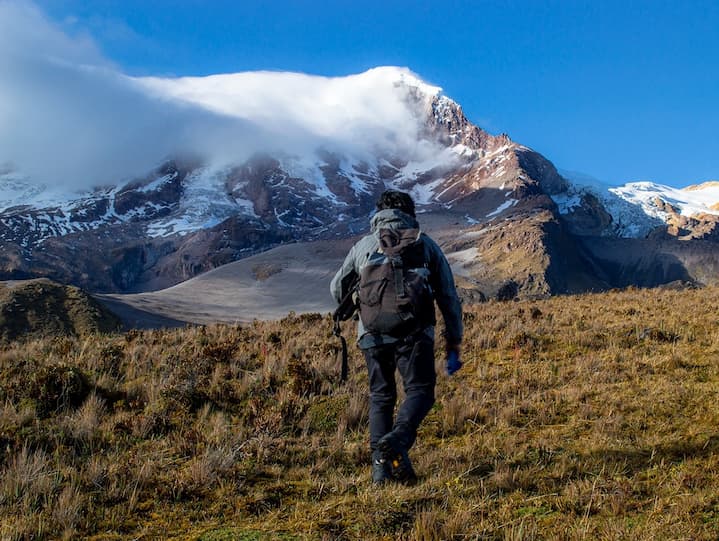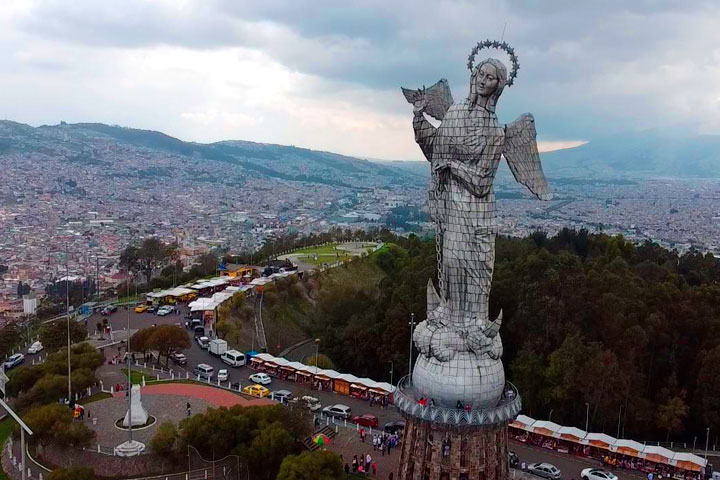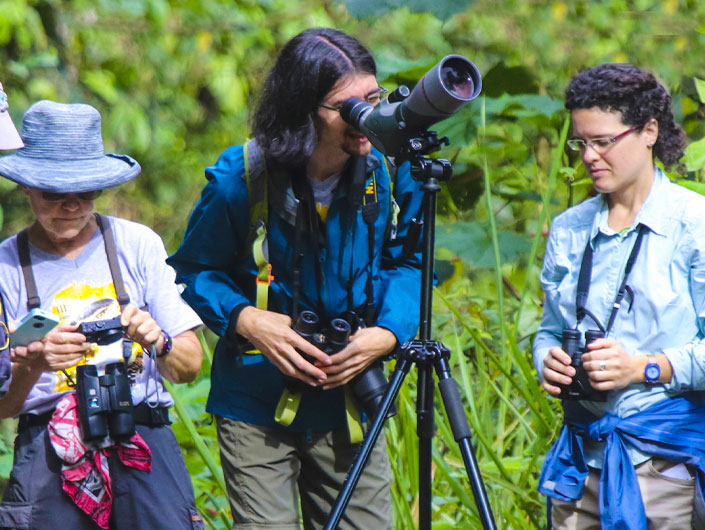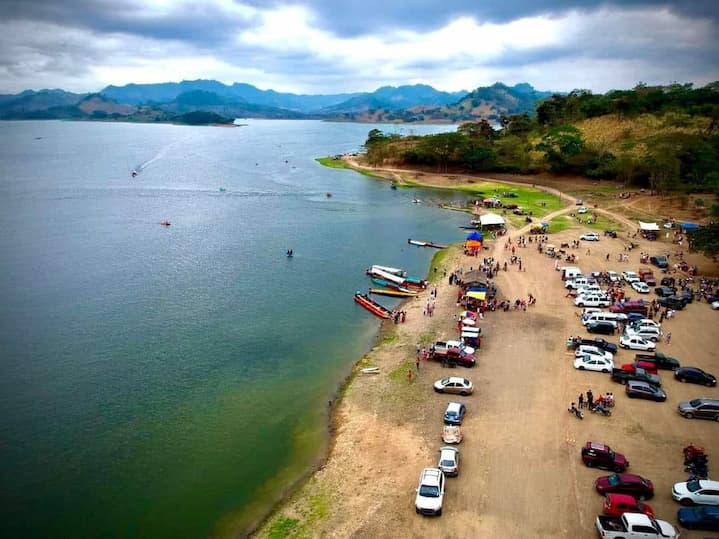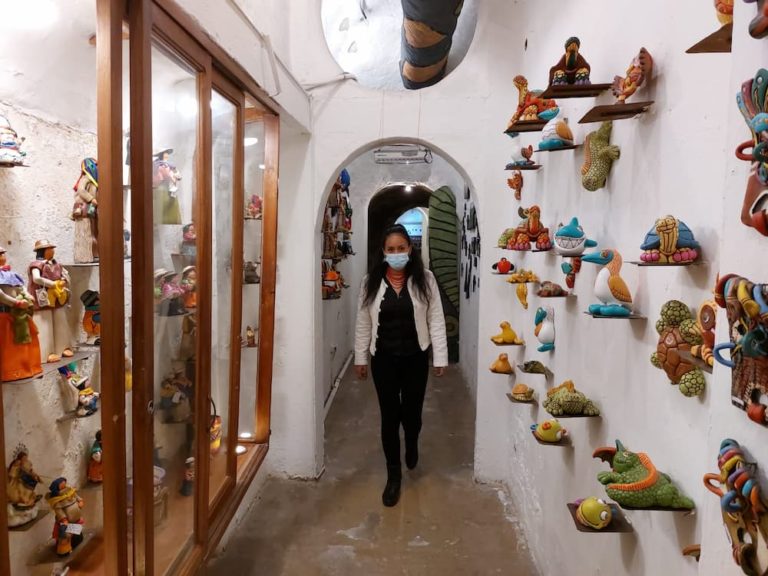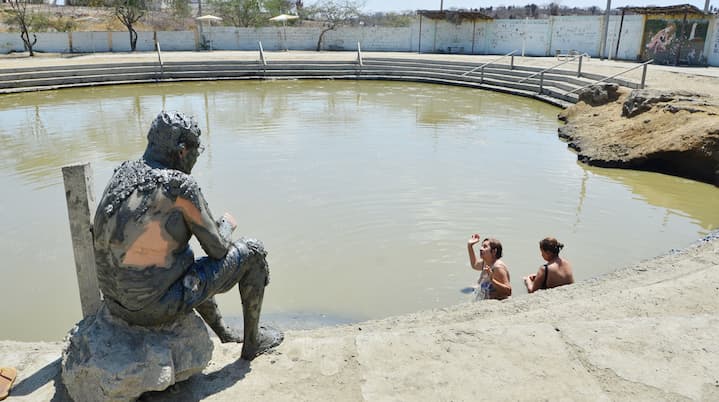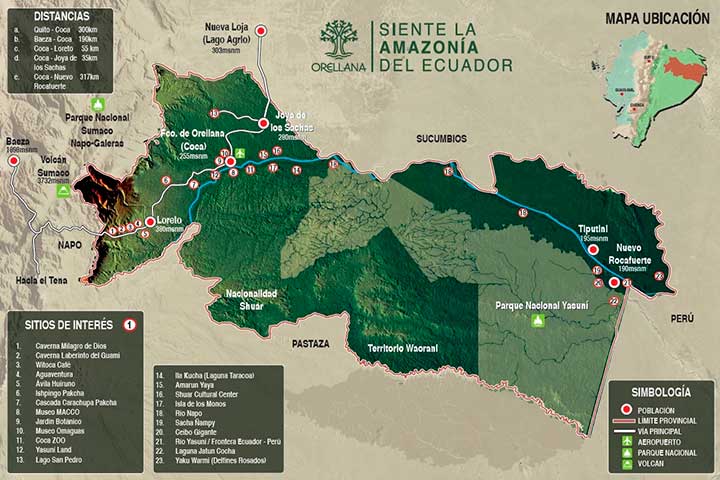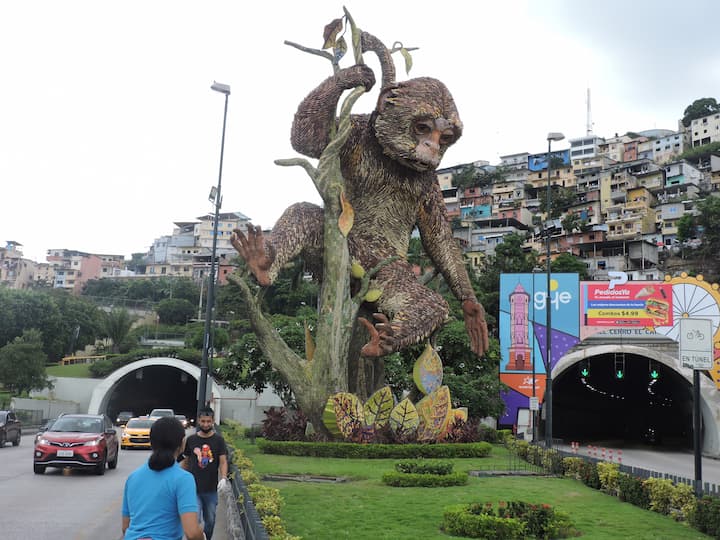The Cayambe volcano is the third highest elevation in Ecuador, after Chimborazo and Cotopaxi. And in the tourist field it is one of the favorites for climbers, as well as for those who like excursions to the edge of the glacier.
One of the characteristics that makes it unique is that its summit, at 5,790 meters, is only 3 km from the Equator, which passes through one of its glaciers. Therefore, this colossus is in great demand by tourists.
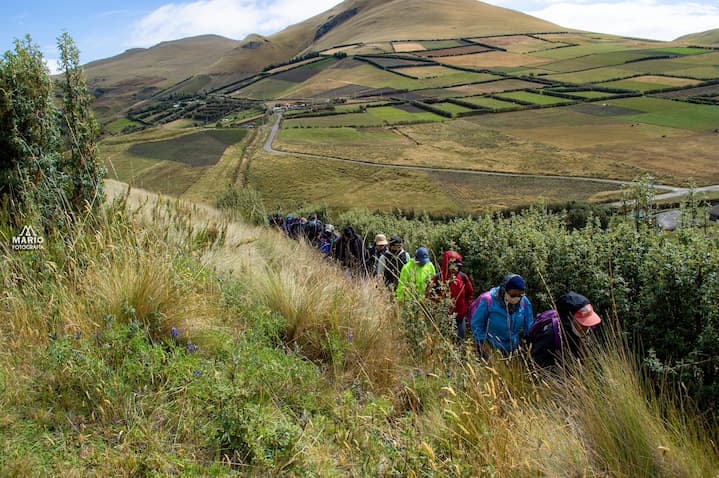
On the way to the top of Cayambe, tourists watch the sheep run in the middle of the route.
Luis López, a tour guide who operates in this volcano, points out that there are two types of tourism that take place in Cayambe. One is the walk that can include camping. The practice of this activity is suggested from 09:00, to reach the vertex of Parallel 0.
"The first day of the tour is completed after 90 minutes when you arrive at the Rúales-Oleas-Berge refuge, from that point on you have to complete a one-hour walk to reach the snow," he says.
The second type of tourism is climbing. If tourists want to reach the summit, López says it would be appropriate to stay in the refuge until midnight, which is usually the time the ascent starts. He maintains that the Cayambe glacier is formed by several cracks, which makes climbing more demanding.
“Those interested in climbing have access to rest in the refuge, maximum only 40 people. The value per night is $12.20 for nationals and $24.40 for foreigners. There is a kitchen in case they want to eat to their liking,” he says.
At the top of Cayambe
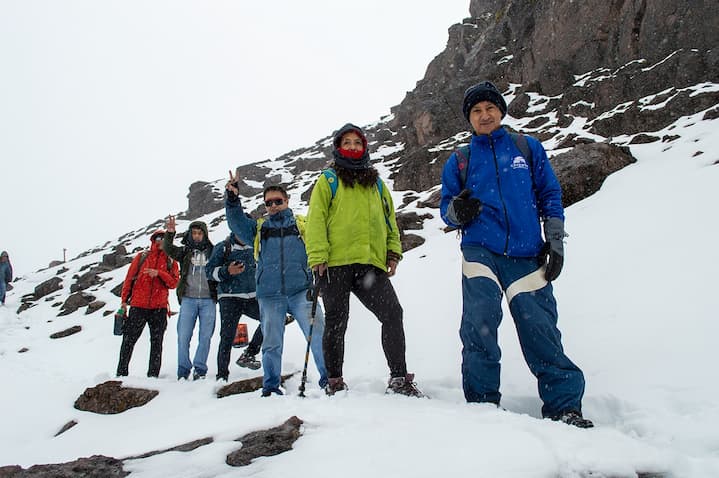
The tourists who go to Cayambe climb the top of its volcano and pose for the cameras.
The Cayambe is an active volcano and one of the favorites for experienced climbers who reach it in six hours from the refuge. Already at the top of its peak, its steep terrain and ice lagoons can be seen, as well as the flight of the condor on the way to the summit. This makes it particularly attractive and worth photographing. López mentions that not only climbs to the summits or walks are carried out, but also camping. Note that sulfurous odors are perceived at the summit, which could be fumaroles or hot springs near the crater.
Biodiversity
- Flora: Moisture-laden winds blow all year from the East; The humidity condenses and precipitates in the form of rain, a factor that influences so that at 3,600 meters above sea level small scattered islets of pinguil trees, romerillos, shrubs with compound flowers are observed in the middle of extensive grasslands.
- Fauna: The fauna reserve of the area is made up of species such as the cuchucho, armadillo, agouti, tapir, guanta, monkey, rabbit, sacha guinea pig, cervicabra, white-tailed deer, pudú, spectacled bear, among others.
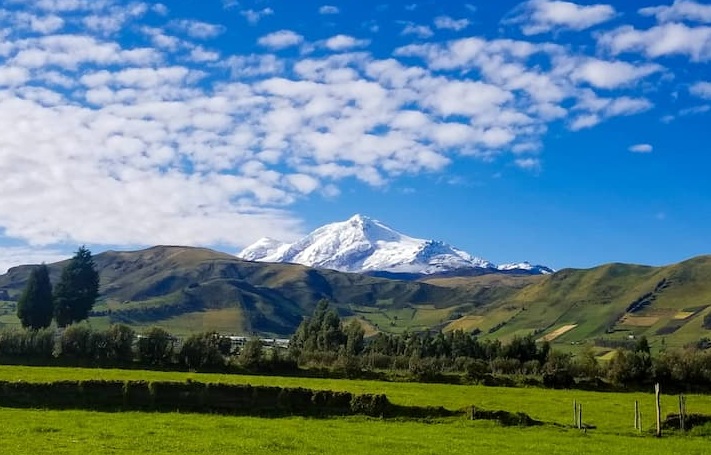
On the route to the Cayambe volcano there are landscapes marked by pastures, green mountains and forests.
¿How to get?
The Cayambe volcano is located northeast of the Hoya de Guayllabamba in the Eastern Cordillera. It is located 21 kilometers from the canton that bears his name.
To get to the volcano, you must take Córdova Galarza avenue, which crosses the cantonal capital. In the Juan Montalvo sector, cobblestone replaces asphalt. A few kilometers later the road becomes ballast. In this way, the journey advances until it reaches 21 km to the Ruales Oleas refuge, located at 4,600 meters above sea level.
“The first section is surrounded by trees and green soil, but after 30 minutes the panorama changes, the trees disappear, the road becomes dusty; On one side you can see the majesty of the inter-Andean alley”, comments López who adds that after a few minutes the páramo is already being reached.
Prices
In case of requiring a personalized guide to climb to the summit, a single climber pays $560; if there are two climbers, $335 each.
López recommends that before embarking on the trip, tourists should consider that a sudden drizzle or snowfall can complicate the journey, however, there is nothing to fear, that is part of the adventure. You must bring adequate food and hydration, adequate shoes, warm clothing, glasses, sunscreen, camera and total predisposition. (I)

